The Berea College campus looks and feels different than when President Lyle D. Roelofs arrived 11 years ago. Physically, his presidency has been marked by a busy time of construction; the completion of nine new structures and six significant renovations translates into more than one project per year.
Most of the construction focused on residence halls. Anna Smith, Dana, Bingham and Seabury underwent complete renovations, while Danforth and Kettering were replaced. Dr. Chad Berry, vice president for Alumni, Communications and Philanthropy, knows the significance of replacing aged structures. “Our students often have lives fraught with insecurity,” he said. “These provide safe and efficient places to live. Philanthropic partners helped Lyle tackle deferred maintenance to construct a physical campus worthy of the people we serve.”
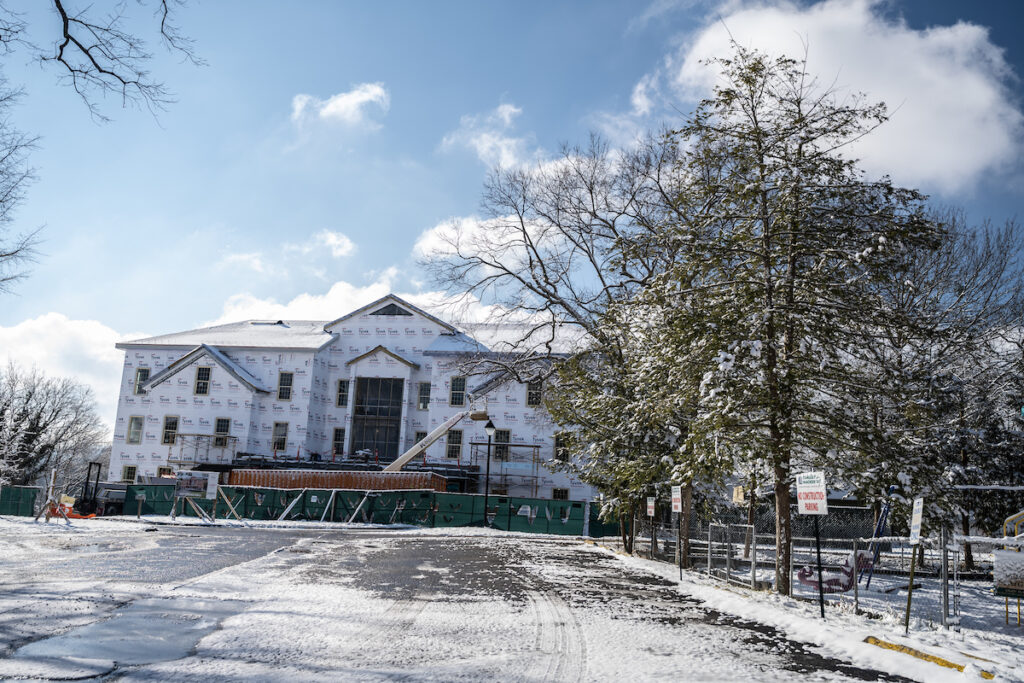
The largest academic project was the Margaret A. Cargill Natural Sciences and Health Building, called the MAC building. The former science building had an unintentional indoor waterfall when it rained and was not able to accommodate the technology for modern science instruction. Berea benefitted from Dr. Roelofs’ experience, both as a former physics professor and as leader for two science building construction projects at previous institutions.
Dr. Megan Hoffman, biology faculty member, served on the design committee for the MAC building. An abundance of study rooms and intentional instructional spaces were an integral part of the design, with the aim to foster an academic culture.
“I designed my classroom,” she said. “It is flexible for different styles of teaching, and the labs are part of the classrooms, which is pedagogically wonderful.”
Hoffman was involved in the fundraising for the $68 million building and says the focus was on how it would impact students. While on a trip viewing science buildings at other colleges, she demonstrated her teaching style and described how she wanted her new classroom to support her work. The MAC building was made possible by hundreds and hundreds of large and small donations and by a generous matching challenge from the Margaret A. Cargill Philanthropies that leveraged those gifts four to one.
The buildings completed during Lyle’s tenure are a complement to the ways he and Laurie both worked tirelessly to convey to students that they mattered. They know hundreds of students by name, and that student-centeredness manifests in the kind of work they did to provide well-constructed and well-maintained state-of-the-art spaces for students.
Chad Berry, Hon. ’20
“The buildings completed during Lyle’s tenure are a complement to the ways he and Laurie both worked tirelessly to convey to students that they mattered,” Berry said. “They know hundreds of students by name, and that student-centeredness manifests in the kind of work they did to provide well-constructed and well-maintained state-of-the-art spaces for students.”
Mindful Construction
Berea’s Great Commitments were a powerful draw for Roelofs. “They are the most essential and precious elements of Berea College,” he said. “They are both a complex nuanced statement of identity and an aspirational vision of what we want to accomplish.”
To ensure that their guidance was up to date for the challenges of the 21st century, Roelofs knew he wanted to lead the campus community in a re-envisioning process around them. In 2014, he invited every member of the College faculty and staff to join what were called Great Committees. The eight groups worked over a full year to articulate the school’s mission, develop goals and craft new comprehensive descriptions for each commitment. More than a third of the College’s employees were involved in the effort, and the experience and resulting documents served to reenergize the campus community around these central statements.
The Seventh Great Commitment, supportive and sustainable living, is one that Roelofs has particularly embraced during his tenure. It speaks to the lessons learned around campus, outside of the classroom, about how the community practices caring for others and the earth. Many of the projects he has encouraged, and the ways he has helped guide new campus facilities, are examples of just that.
“Laurie and I were already strongly committed environmentalists,” he said, “but I didn’t know sustainability would be such an opportunity at Berea.”
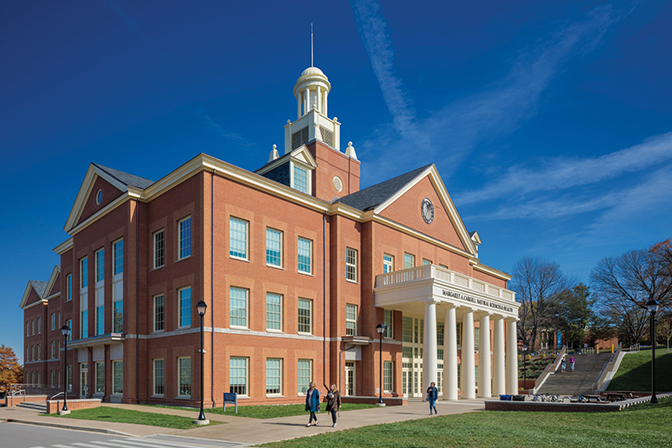
Building on existing practices at the College, all the new non-residential structures on campus—the MAC building, the Facilities Management Complex, and the new technology building under construction—will be LEED Gold certified. The most widely used green-building rating system in the world, Leadership in Energy and Environmental Design (LEED) standards consider energy use, water use, indoor environmental quality, material selection, site and location within the surrounding community.
Construction of the new Larry D. and Nancy L. Shinn Hall (formerly Deep Green Residence Hall) was started during Dr. Shinn’s presidency and completed during that of Roelofs. It was an experiment to push the limits of green building practices for university housing. It won numerous awards and achieved LEED Platinum certification, the highest level available. Upon its completion, it was the greenest residence hall in the world.
Several other new structures intentionally support the campus sustainability mission. The Berea College Farm Store offers organic groceries from the College farm and other local producers. Daily prepared meal options in the dining hall and at the Farm Store incorporate farm products and give students the experience of enjoying value-added foods made with organic ingredients.
While not actually on campus, a hydroelectric plant on the Kentucky River is an important element of the College’s sustainability efforts. The renewable electricity it generates offsets half of the College’s electrical carbon footprint. The project is also a sound investment. By selling the power to the electric cooperative near the plant, the College receives a return on investment greater than the school’s endowment could provide. Construction is already underway for a second hydroelectric plant upriver from the first. Upon its completion, the College will generate as much electricity as it uses—all without fossil fuels.
Managing the Forest for Sustainability
Many of the best recreational opportunities around Berea are a result of the College opening its lands to the public, a practice that has expanded with Roelofs’ leadership. Spring is a great time to see ephemeral wildflowers at Anglin Falls, summer is perfect for paddleboarding on Owsley Fork Reservoir and fall colors are dramatic from the Indian Fort Mountain Trails overlooks. The hikes at the Pinnacles have recently been recognized as the best in Kentucky.
Berea has a long history of forest stewardship as the owner of 9,000 acres. The Tirbracken Green Forestry Outreach Center, another new and mission-minded building, is located at the entrance to the Indian Fort Theater trails. The center provides nature-focused programs and information, deepening visitors’ understanding of and connection to the forest and inspiring them to preserve these kinds of natural systems. As Roelofs sees it, Berea College holds the deed but, in turn, accepts the responsibility of managing the College Forest for the benefit of the whole region in a way that promotes and displays a commitment to sustainability.

Roelofs has been a strong advocate for the College’s new (in modern times) horse-logging program. It is one tool in the College’s restorative land management practice that also selectively harvests diseased, dying and dead trees, improving the health of the forest overall. It is ideal for Appalachian forests, which are hilly and rugged and usually contain a mix of tree species.
The College first utilized a team of mules to harvest 5,000 board feet of lumber for paneling and furniture in Shinn Hall. It was an important element of the building achieving Platinum LEED status. Dr. and Mrs. Roelofs saw a video on the College website of the mules at work—their names were Fred and Dan. Upon arrival, discovering that they were contracted for the work and not actual Berea College “employees,” the Roelofs were inspired to shift all logging to animal power to eliminate the damage to the forest caused by the use of mechanical tree-harvesting methods.
Two teams, each consisting of two horses and two loggers, are already on staff. The teams are managed by a trio of horse logging program technicians who worked with Roelofs to establish the 70-acre horse farm located a few miles off campus. Along with adequate pasture, it contains a new barn to house the 12 animals necessary for the annual harvesting goals of the forest. It will be the only educational draft-horse barn with both public and student access in Kentucky.
The draft horses are also sustainability educators. The Agriculture Department incorporates them in class curricula. The farm is easy to access by both road and hike/bike trail and welcomes guests to learn about sustainable forest management through programs and informational signage. “By coming back to horse logging for sustainability, we have come full circle,” said John Hite ’19, one of the horse logging program technicians, “not because of the history of it but because it is the best, low-impact way we know to do it.”
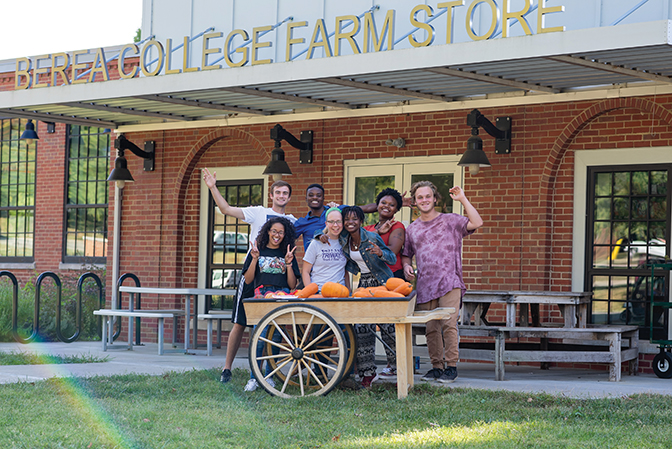
The College has access to an additional resource that supports its work as good stewards of the forest: the California Carbon Market. Currently, a trucking company offsets the carbon emissions from its business by purchasing credits generated from the carbon absorption power of the forest. Berea College invests those funds back into further sustainability initiatives, like the new horse barn and the acquisition of additions to the College Forest.
Supportive Culture
Roelofs’ presidency has been constructive beyond buildings and environmental initiatives. As the Great Commitment for Supportive and Sustainable Living reminds us, “we acknowledge we are not on this journey alone—we will need each other along the way.” He has brought a mindfulness of how he can come alongside other members of the College community.
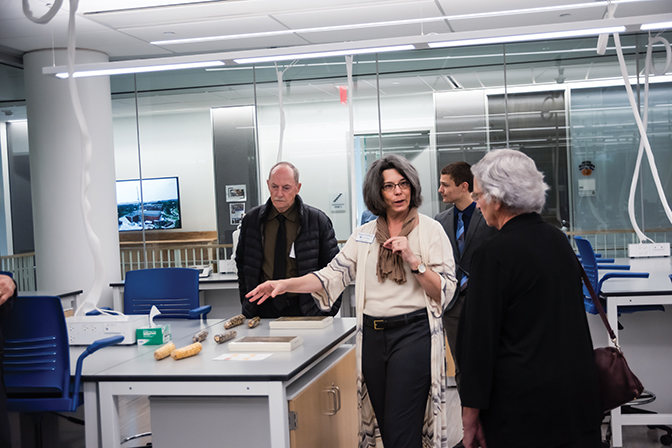
Dr. Megan Hoffman, biology professor, observes that the Roelofs are approachable and accessible to everyone on campus. They have invited the campus community to join them for a twice- weekly jogging/walking time to get to know them in an informal setting. Their email addresses are available to students, and they respond when any member of the community reaches out. Other times, students stop them on campus walkways to discuss concerns or make friends with Nellie, their dog. During monthly faculty meetings, he shares his thoughts and then invites any and all questions. “I am so impressed with how he listens with grace,” Hoffman said.
Roelofs’ ability to support and listen with grace doesn’t stop with faculty and staff. He consistently made it a point to listen to and build relationships with students as well.
“Upon assuming my leadership role within the SGA,” said Conner ’23, Student Government Association president, “I was able to work more closely with Lyle both in campus-governance committees and during our monthly meetings. I found Lyle to be a great support system to get student initiatives through Berea’s governance system both in terms of providing advice and lending his approval.
“President Roelofs’ biggest impact was bringing Berea back to its radical roots by re-emphasizing the legacy of John G. Fee and our founder’s mission of opposing systems that breed social inequality,” Conner continued. “He fundamentally helped move Berea forward, recommitting us to our legacy of radical inclusion by presiding over the expansion of Black student enrollment, the admission of DACA students and the creation of various cultural centers. The president has shown real leadership in helping shape Berea to be a more inclusive and progressive institution.”
Since the beginning of his tenure, Roelofs has written monthly campus news emails to faculty, staff, students, alumni and community members. That foundation was crucial when COVID-19 hit in 2020. During the rapidly changing early days of the pandemic, he ramped up to daily missives. “These communications were huge for me to keep up to date on what was happening and were enormously helpful for the community during a time of disruption,” Hoffman said.
Communication professor Dr. Verlaine McDonald is impressed with how Roelofs approaches leadership with both humility and playfulness. She first experienced his humility while serving with him on the Strategic Planning Council. He dedicated his first semester with the group to listening. “He didn’t come in telling us how he was going to fix us,” she said. “It helped faculty and staff to feel that what we had to say and our experience was valuable.”
Roelofs’ jokes, mostly more likely to make one groan than laugh, are legendary around campus, where he shares them liberally in meetings and email updates. During one episode of fierce winter weather when nearby universities chose to close, Berea stayed open. He created a “winter skillz” email that snowballed; students responded with hilarious memes, after which he partnered with Marketing and Communications staff to produce a spoof video. One “skill”: if students didn’t have enough winter gear to stay warm, they could wrap a hand towel around their necks as a scarf. The school even created commemorative #winterskillz hand towels. “It became a running joke, and the students loved it,” McDonald said. “His genuine warmth and good humor have been a comfort in various settings.”
A way of thinking about the Seventh Great Commitment, first articulated during the re-envisioning process, is to ponder the question, “How, then, should we live?” In his presidency, Roelofs has attempted to live out an answer: by constructing a campus environment, both built and human, that is attentive, conscientious and people-centered, but doesn’t take itself too seriously.
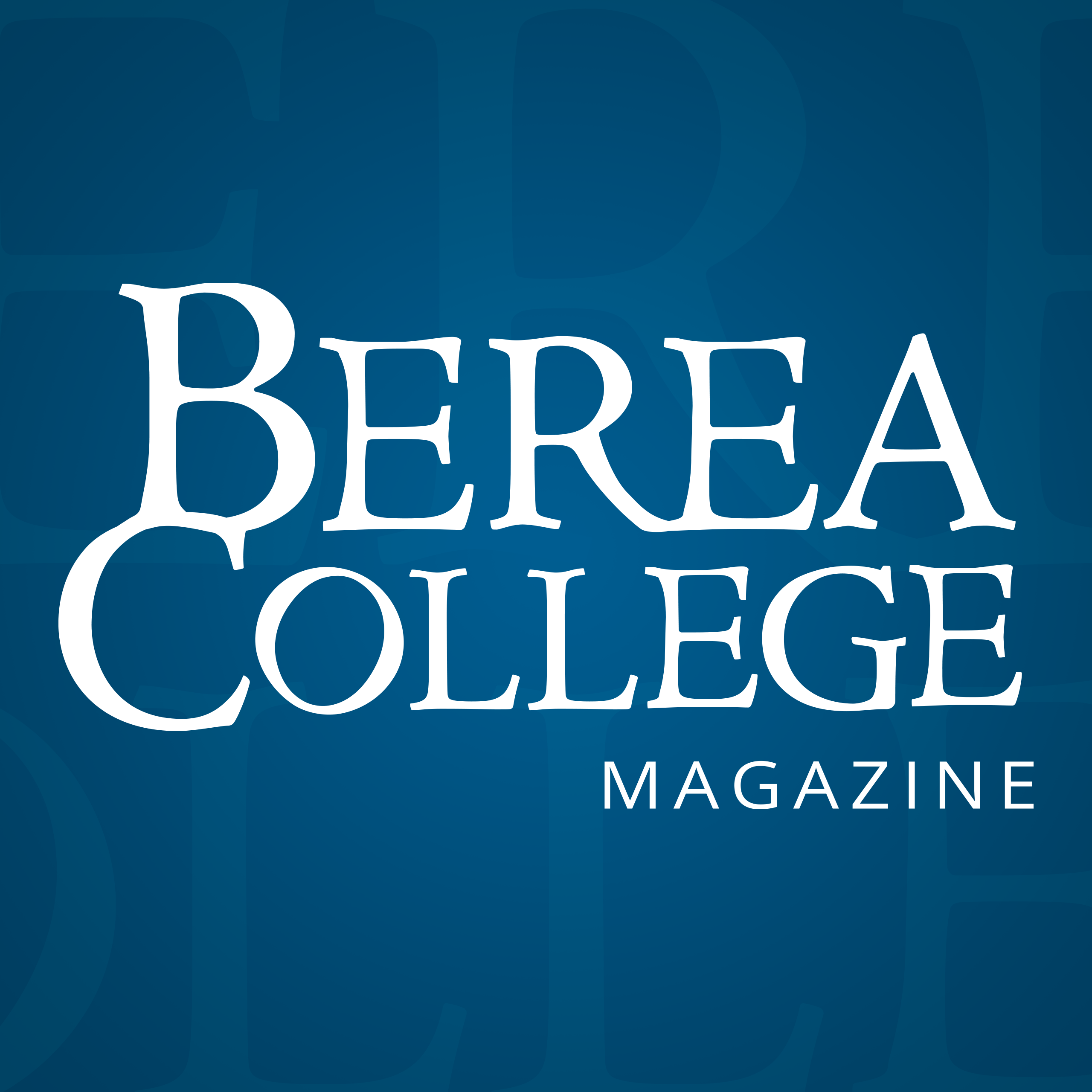

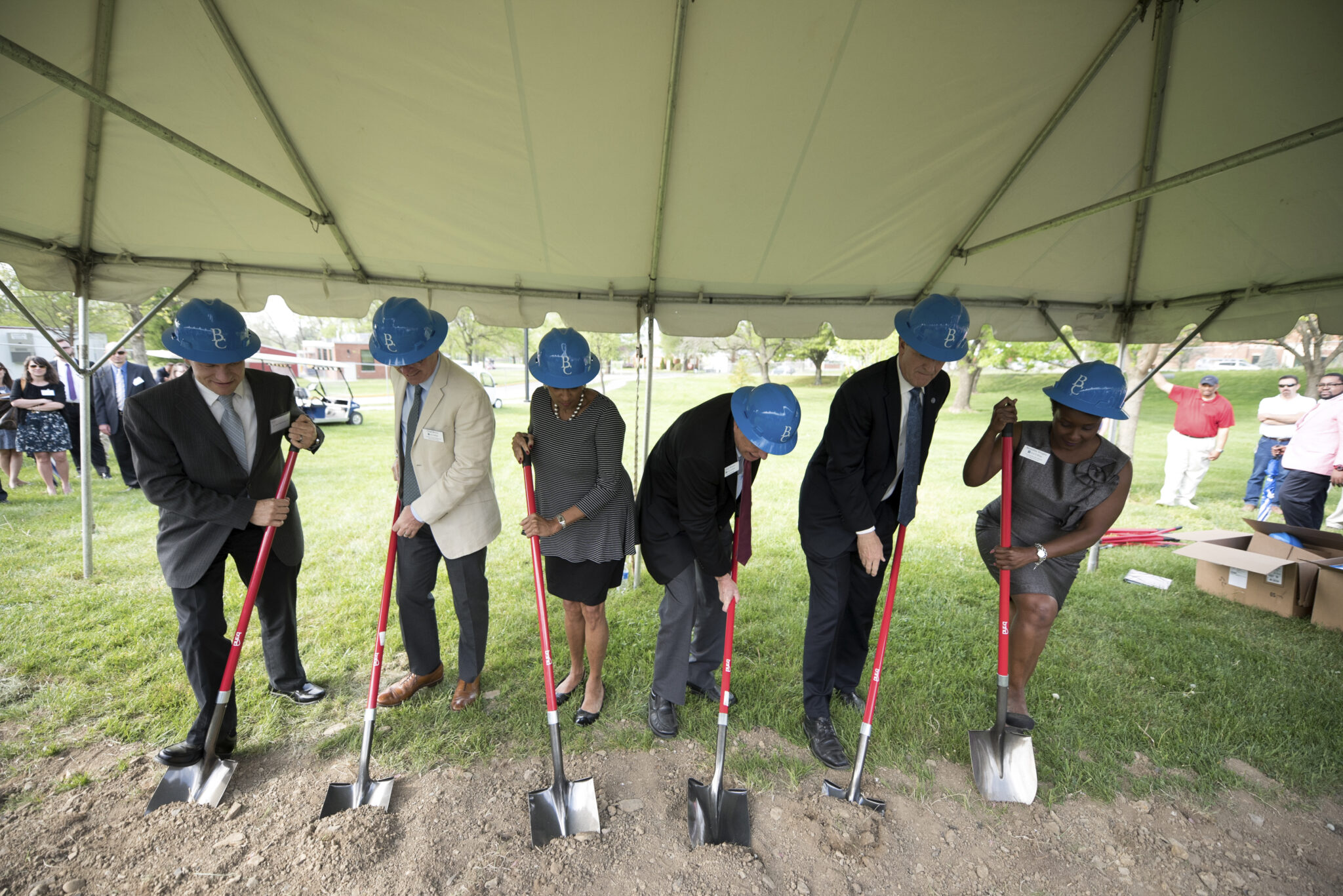
Certainly has been great accomplishments by U’re teamwork since meetin in U’re home on da 1 sharnin challenges agreed were needed 2 C a robust Appalachian College like none-other Berea College in America & the World educatin the youth of Appalachia learin 2 serve in their life goal through labor love & leadership of their own makin World a much richer inhibition 4 all 2 enjoy Continue U’re excellent mission even durin a well earned/deservin retirement